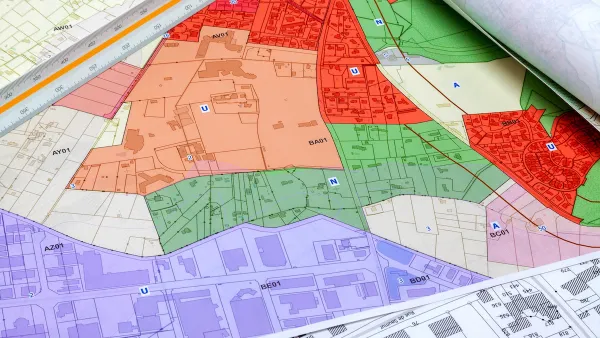Urbanists, test your knowledge of urban economics. Familiar with the concept of agglomeration externality? Finance professor and Bloomberg View writer Noah Smith opines it's a major reason why American cities are not as productive as they should be.
Noah Smith, an assistant professor of finance at Stony Brook University and freelance writer for a number of finance and business publications, addresses urbanization from an economics perspective. While his reasons for promoting cities differ from what is more often posted in Planetizen, his conclusions are similar, if not identical—cities have distinct advantages over more sprawling land use patterns.
Smith argues that the U.S. needs to shift from a pattern of "extensive growth to intensive growth."
Extensive growth is based on greater inputs. More energy, more cheap labor, more land. When you use existing technologies to build more roads and more buildings, that’s extensive growth. Intensive growth, on the other hand, is about getting more output for a given about of input -- doing a lot with a little...Improved production technology, of course, is one of the biggest generators of intensive growth."
From there, he transitions to population density and land use patterns.
Sprawl probably reduces productivity. When people cluster more tightly together, they become more productive -- this is known in economics as an agglomeration externality. This explains why the same person will produce more economic output in New York City than in a small town. [He follows this with a line graph of cities and productivity].
Referencing a 2010 staff report [PDF] by the Federal Reserve of New York, Smith writes, "In fact, density itself is correlated with productivity, even holding size constant. So there is a big opportunity for the U.S. to take better advantage of agglomeration: increase urban density by making it easier for people to move into big cities...In other words, the U.S.’s next frontier may be its own cities."
Smith expounds on three factors that hinder intensive growth:
- Excessive land use regulations, such as zoning that require low density, referencing a paper by another economist, Nathan Seegert of University of Utah. [He could have also mentioned unreasonable parking minimums.] "Urban economists argue back and forth about whether cities are too large or too small," adds Smith. "But there is a general realization that local regulations can prevent cities from attaining their full potential."
- High infrastructure costs for urban rail infrastructure. "Transportation blogger Alon Levy has probably done the most to raise awareness of [U.S. urban rail infrastructure costs], with five years of posts documenting the cost differences," writes Justin Fox for Bloomberg View.
- High urban housing costs. "The main barrier to housing construction in these places is local regulation -- zoning ordinances, environmental requirements, even affordable-housing rules," writes Fox in another Bloomberg View piece.
Smith concludes by offering three detailed recommendations related to the above bullets "if the U.S. is going to jump-start an era of infill." In his closing paragraph, he sounds more like an urbanist than an economist:
The U.S. can't afford to let its cities fragment into sprawling suburbs or degenerate into overpriced refuges [or so they might seem] for the rich. The U.S. must embrace the new frontier by packing more into its urban areas.
Contributor's note: In 2010, former Planetizen contributing editor, Nate Berg, wrote about "the economic advantages of agglomeration" in a post based on a New York Times piece written by Harvard economics professor, Ed Glaeser.
Hat tip to Loren Spiekerman.
FULL STORY: Want Economic Growth? Try Urban Density

Analysis: Cybertruck Fatality Rate Far Exceeds That of Ford Pinto
The Tesla Cybertruck was recalled seven times last year.

National Parks Layoffs Will Cause Communities to Lose Billions
Thousands of essential park workers were laid off this week, just before the busy spring break season.

Retro-silient?: America’s First “Eco-burb,” The Woodlands Turns 50
A master-planned community north of Houston offers lessons on green infrastructure and resilient design, but falls short of its founder’s lofty affordability and walkability goals.

Test News Post 1
This is a summary

Analysis: Cybertruck Fatality Rate Far Exceeds That of Ford Pinto
The Tesla Cybertruck was recalled seven times last year.

Test News Headline 46
Test for the image on the front page.
Urban Design for Planners 1: Software Tools
This six-course series explores essential urban design concepts using open source software and equips planners with the tools they need to participate fully in the urban design process.
Planning for Universal Design
Learn the tools for implementing Universal Design in planning regulations.
EMC Planning Group, Inc.
Planetizen
Planetizen
Mpact (formerly Rail~Volution)
Great Falls Development Authority, Inc.
HUDs Office of Policy Development and Research
NYU Wagner Graduate School of Public Service




























